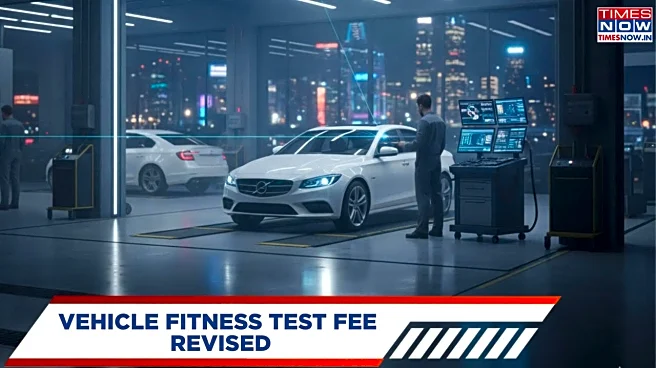If you own a vehicle that is 10 years old or more, then there is an important update you should know about. The Ministry of Road Transport and Highways (MoRTH) has revised the vehicle fitness test fees
under the Central Motor Vehicles (Fifth Amendment) Rules, 2025 and these changes affect almost every category of vehicle like motorcycles, scooters, cars, autos, vans, goods carriers and passenger buses.
A vehicle fitness test is basically a health check-up for your vehicle. Just like we go for medical check-ups, vehicles also need to be inspected to ensure they are safe, roadworthy and not harming the environment. This test becomes especially important as vehicles get older, since wear and tear can impact their performance and safety.
Earlier, higher fitness test fees applied only after a vehicle crossed 15 years of age. But under the latest amendment, MoRTH has moved this threshold down to 10 years. This means that if your vehicle is between 10 and 15 years old, it will now fall under a costlier fee slab.
Also Read: Indian Bike Brand Ultraviolette Enters The UK Market - Details Inside
New Fee Brackets Based on Vehicle Age
The government has introduced three revised age categories for fitness test fees:
- 10 to 15 years
- 15 to 20 years
- Over 20 years
Standard Fitness Test Fees (for vehicles under 10 years)
- Motorcycles: Rs 400
- Three-wheelers / LMVs / Quadricycles: Rs 600
- Medium goods or passenger vehicles: Rs 1,000
- Heavy goods or passenger vehicles: Rs 1,000
Fitness Test Fees for Vehicles 15–20 Years Old
- Motorcycles: Rs 500
- Three-wheelers / LMVs / Quadricycles: Rs 1,000
- Medium goods or passenger vehicles: Rs 1,300
- Heavy goods or passenger vehicles: Rs 1,500
Fitness Test Fees for Vehicles Above 20 Years
- Motorcycles: Rs 1,000
- Three-wheelers / LMVs / Quadricycles: Rs 2,000
- Medium goods or passenger vehicles: Rs 2,600
- Heavy goods or passenger vehicles: Rs 3,000
This fee hike is expected to impact a large number of vehicle owners across India, especially those who use older two-wheelers, autos or commercial vehicles. The government believes the updated structure will encourage regular vehicle maintenance, reduce pollution and improve road safety.
Many countries already follow similar age-based fitness regulations, and India’s move aligns with global norms which are aimed at reducing emissions from ageing vehicles.
For more two wheeler, three wheeler and auto industry updates, stay tuned to Times Now Auto.



/images/ppid_a911dc6a-image-17633672306011540.webp)







/images/ppid_59c68470-image-176327502863799559.webp)


/images/ppid_a911dc6a-image-176323364734993589.webp)